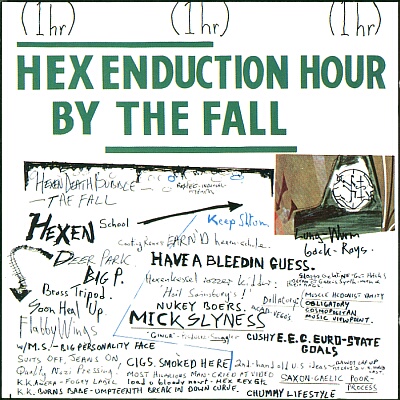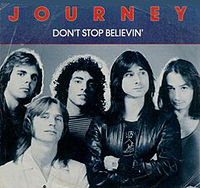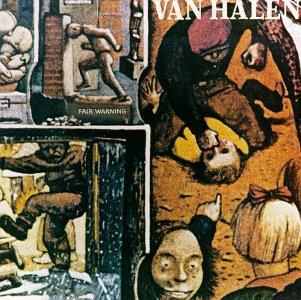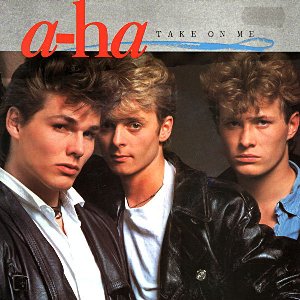
100.
Human League
“Don’t You Want Me”
[Virgin; 1981]
The awful cultural and musical trends of the ’80s are usually lamented upon as silly and idiotic, and for some reason, unbeknownst to me, new wave and pop music from the period are included in that group. Did bands like Culture Club and the Human League deviate from social norms? Of course. But just because they wore bad-looking clothes and makeup doesn’t mean their art should be discounted in the modern era. Take for instance “Don’t You Want Me,” a song that once reached #1 on the US, UK and Canadian charts, and a song now mostly used in dimly lit bars during karaoke hours. The synth pop hit still stands as an example of pop songwriting, guy-girl vocal verses, arpeggiated keyboards, and that certain undeniable charm that can’t be written. “Don’t You Want Me” is a terrific song, and it would be shame to have be remembered only for its incidental humor.
– Erik Burg

99.
The Fall
“The Classical”
[Kamera; 1982]
“The Classical” was a sort of rebel’s anthem for those formative post-punk years in the early ‘80s when bands like The Fall were trying to lead the punk ideology to more adventurous heights — and taking the most slacker route possible. When this song comes on as the opener for Hex Enduction Hour, there is no mistaking that you’re listening to something incredibly important. It barges into your eardrums like a stumbling-drunk house guest with two — count ‘em, two — drummers that demand your immediate attention. It doesn’t take long for frontman Mark E. Smith to start mouthing off into the microphone with seemingly irreverent drivel — “Hey there, fuckface! Hey there, fuckface-uh,” he slurs and punctuates with his trademark vocal tick. The nervous-yet-bouncy guitar line that runs throughout the song helps make it one of The Fall’s most melodically-cohesive tracks to-date. Or their best song entirely, according to me, and if you disagree, I’ll fight you on it — in true Mark E. Smith fashion.
– Arika Dean

98.
Journey
“Don’t Stop Believin'”
[Columbia; 1981]
In all probability, the signature Journey anthem is being belted out to the delight of a dive or karaoke bar at this very moment. Guilty or otherwise, the pleasure behind “Don’t Stop Believin'” is hard to deny. Thanks to Steve Perry’s inimitable style of belting, the song worms its way through the ear of the listener and establishes permanent residence. From the opening keyboard riff to the delayed gratification that comes from an unusual structure which finally reveals the chorus near the end of the song, “Don’t Stop Believin’” is definitive to both the art of the power ballad and the decade from whence it came.
– Frank Mojica

97.
Van Halen
“Unchained”
[Warner Bros,; 1981]
Van Halen going “dark” for Fair Warning was a great move, if only for having tracks like “Unchained” being signature tunes over the party anthems. Sure, it’s pretty laid-back at times and that part when David Lee Roth talks to something is pretty absurd, but after that it’s pretty serious. As with anything Van Halen, the guitar is the focal point and it sets the scene well. Eddie Van Halen manages to convey a menacing atmosphere surprisingly well throughout the song, all the while straddling the line between menacing and playful. It’s almost as if he’s saying something menacing with a wink and a twisted smile. There’s also a little message peppered throughout the song and it’s all about change. Given the tensions surrounding the band around this point, it’s a clever little addition which doesn’t derail the rest of the song.
– Daniel Griffiths

96.
Talking Heads
“This Must Be the Place (Naive Melody)”
[Sire; 1983]
Ah, the song that made so many reconsider the relationship they share with their lamp. Who can say why a grinning David Byrne chose the lamp as his dance partner in this scene of Stop Making Sense? Maybe it’s a cheeky play on “light in your eyes,” maybe it’s about love in things we take for granted, things that never leave and help us to bed when we’re fumbling and maybe kind of drunk. I like to think Byrne would tell me to stop thinking so much.
“Naive Melody” is as fine a love song as they come, alternately chirping and soaring over the kind of bass and keys that make you want to wiggle. In a way it’s also a sort of foil to “Once In A Lifetime.” Here we are with our lamp-eyed lover and it doesn’t matter how we got here, only that we are.
– FM Stringer

95.
Peter Gabriel
“Red Rain”
[Geffen; 1987]
The one-time Genesis frontman had already rattled off a stellar series of quirky, prog-leaning solo albums by the time 1986’s So was released. While the album is remembered today primarily for the pop hits “Sledgehammer,” “Big Time,” and “In Your Eyes,” the best example of its smart blending of pop hooks with an arty undercurrent is its opening track, “Red Rain.” Gabriel’s stroke of genius was bringing in Stewart Copeland of the freshly disbanded Police solely to create a rain effect on the hi-hat – a job nobody in the world is more uniquely qualified to do than Copeland. “Red Rain” is also a terrific showcase for Gabriel’s reedy, versatile tenor.
– Sean Highkin

94.
Blondie
“Call Me”
[Polydor / Chrysalis / Salsoul; 1980]
If there’s one song that best depicts Blondie, it’s “Call Me.” It was a number one bit both in the United States and across the pond.
“Call Me” was the theme song in the film American Gigolo. Giorgio Moroder, a disco producer, worked with singer Debbie Harry on the cover track, which explains the song’s dance floor vibe. Harry sings “Cover me with kisses baby / Cover me with love / Roll me in designer sheets / I’ll never get enough,” which goes well with the film, along with the chorus. Hell, even the track’s name ties in with American Gigolo.
Moroder originally went to Fleetwood Mac’s Stevie Nicks to work on a song for the movie, but Nicks was unable to due to contract complications. Even though I wonder what the song could have become if Nicks had a hand in it, I can’t imagine the song being done by anyone else.
– Nicholas Preciado

93.
A-ha
“Take On Me”
[Warner Bros.; 1985]
I’m not sure exactly what it is, but you can always count on the Scandinavians to create pure pop gold, and A-ha’s “Take On Me” is just that. Granted, the song’s huge Billboard chart performance was bolstered by the revolutionary rotoscope-animated music video, which was released to MTV (ah, how influential you used to be!) a month before the single officially dropped. But still: Those driving drums and that infectious plunking synth line, to say nothing of Morten Harket’s phenomenal vocal performance, starting the chorus as low as he can go and slowly building to that final falsetto. And in that moment you can hear the thousands of mangled party sing-alongs and karaoke performances to come — but even in our perpetual failure to replicate that high-note, we keep doing it because man is it a blast to try.
– Jon Blistein

92.
LL Cool J
“I Can’t Live Without My Radio”
[Def Jam; 1985]
Long before he was doing whatever it is LL does on that NCIS bastard child of a show, Cool J was the coolest MC on the block. It didn’t last long, as his earnest nature got quickly crushed, bludgeoned, and stomped out by harsher performers, but lest you forget, he was the man. It may look at first glance now, but any serious head will tell you, Radio is one of the most important hip-hop records ever released. Let’s put it this way: this track was sampled on Eazy’s debut. If you consider that album influential (if you’re sane, you should), then what does that make this? With some simple verses about his life, LL had attracted a nation’s attention. Before you knock him for following in Cube’s footstep’s, let’s give him a hand for helping build hip-hop into the storytelling force it is.
– Chase McMullen

91.
Cyndi Lauper
“Girls Just Wanna Have Fun”
[Epic / Portrait / CBS; 1983]
The name Robert Hazard is probably unfamiliar to you, but the Philadelphia-born songwriter is responsible for one of the ‘80s’ most enduring feminist anthems. In fact, Hazard never meant for “Girls Just Want to Have Fun” to be particularly “feminist” at all, having come up with the idea for the song while taking a shower (from a male perspective, no less). But such is the power of Cyndi Lauper’s vocal presence; despite the song’s inauspicious beginnings, she made it a Billboard smash and her signature tune. Lauper was thirty years old (hardly a “girl” anymore) when she released her version of the song in late 1983, but her rambunctious delivery — equal parts girly, flirty, whiny, and impassioned — coupled with a classic music video endeared her to girls the world over. The track itself is catchy but nothing special; lighter-than-air synths dance around ‘50s-throwback chanting and an infectious rhythm. But Cyndi Lauper made it special; who else could have imbued it with such a devilishly adolescent spirit? And can you imagine what it would sound like today, with Lauper’s one-in-a-million delivery chopped and truncated by an overzealous autotune?
– Josh Becker

